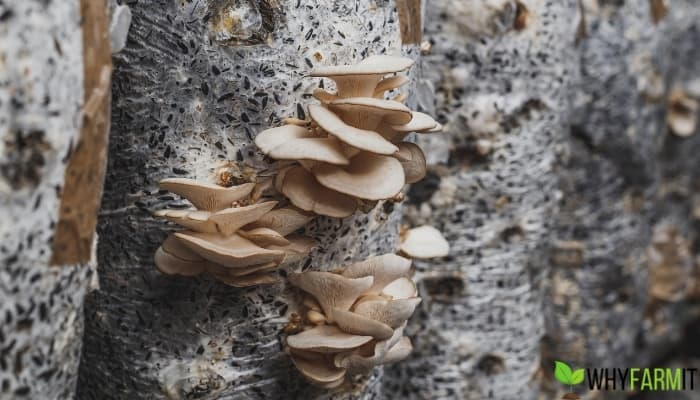Mushroom Farming 101
The venture of mushroom cultivation is interesting and fruitful. It can be quite demanding, but it’s also surprisingly easy to get into.
Growing mushrooms is quite similar to growing anything else, and if you have any farming experience, much of that will carry over into mushroom cultivation.
And just like other types of farming, this work requires a significant time commitment, lots of handiwork, plenty of trial and error, and some startup capital to get it all going.
Luckily, there isn’t anything big, hard to find, or expensive that you need right off the bat.
While some commercial mushroom farms have multi-million dollar systems, many small-scale “boutique” mushroom farms are incredibly successful with only basic tools and equipment.
The market for “specialty” mushrooms like oyster, shiitake, lion’s mane—basically every mushroom other than button, crimini, and portabella—has been growing for years.
The market is healthier than ever with plenty of room for new growers to come in and leave their mark.
If you have any interest in growing mushrooms for a living, this article is for you.
I will show you everything you need to know about growing mushrooms for profit.
How Do Mushroom Farmers Make Money?
Making money as a mushroom farmer is very similar to making money farming just about anything.
When you break the mushroom growing business model down to its core, it’s all about producing a high-quality product as efficiently as possible and then providing that product to customers for a competitive price.
Which mushrooms you decide to grow, how you grow them, and how you market them can all change, but what stays the same is where you can sell them.
Here are your options:
Selling Mushrooms At Farmers Markets
The first outlet to consider is your local farmers market.
Farmers markets offer mushroom growers a direct line to customers. People go to farmers markets to get the freshest and highest quality food products.
This works perfectly because mushroom farmers usually want to sell their products fresh and as quickly as possible to avoid having to dry them or having them spoil.
The advantages of farmers markets go beyond immediate sales, they are also an ideal networking and marketing opportunity. Unlike with other sales outlets, markets allow you to build face-to-face relationships with your customers.
And, if customers love your product, you can be fairly sure they will come back for more next week.
When you make a sale, you can give out cards, brochures, special offers, and more. Even just having your name on a sign at the farmers market is a great marketing opportunity.
Very often, your farmers market customers will end up engaging with your business in another way, like buying mushrooms directly at your farm/growing space, buying your products online, or even just following your business on social media.
Selling Mushrooms To Chefs and Restaurants
Another great opportunity for mushroom growers is building a relationship with local chefs and restaurant owners who will buy your products, usually on a weekly or seasonal basis.
Great chefs live for fresh mushrooms. If you can show them that you have a great product and a consistent supply, you’ll have yourself a great source of income.
Sometimes all it takes is a phone call to a local restaurant to get your foot in the door. Alternatively, you can literally get your foot in the door by visiting the restaurant early, before service starts, and offering the chef a sample of your mushrooms.
Believe it or not, many long-term business relationships have started this way.
Just like with farmers markets, selling to restaurants is all about your local community. If you choose these routes for your business, you will need to have a great understanding of your local food economy and be comfortable putting yourself out there and connecting with local buyers.
Selling Mushrooms To Stores and Supermarkets
A dream for many mushroom growers is to land a contract with a store. While selling to stores can be one of the most difficult sales channels to get, it’s also one of the most rewarding.
This can come in the form of a small local health food store or a major national retailer—both buy mushrooms from independent mushroom growers, even small ones.
Finding a store to sell to can be daunting. The first place to start would be your local health food store or independent grocery store.
Negotiating a deal with these businesses is usually easier and more accessible than dealing with something like Whole Foods.
However, if you have the experience and the supply, working with a supermarket can be the most profitable outlet for your mushrooms.
The only trick is landing the contract and then meeting the standards of the retailer in terms of quality, price, and supply.
Selling Mushrooms Directly to Customers
The last option available to mushroom farmers is to make your sales without any third parties involved. This can be in the form of delivery or on-site pickup.
Delivery would involve you connecting with customers directly via social media, your website, or phone and making deliveries right to their doorstep.
On-site pickup can be quite profitable as you won’t need to pay farmers market fees or spend money on delivery. Customers will come to you at your farm or growing site.
This can be in the form of a farm store, CSA, or just a simple exchange and a handshake.
If mushroom farmers are lucky enough to make on-site pickup a reality, it can be one of the most convenient sales channels possible.
What’s Needed To Start A Mushroom Farm
At the most basic level, starting a mushroom farm is incredibly simple and doesn’t require much equipment.
The simplest course of action is to buy ready-made mushroom growing kits (like this popular one on Amazon).
With these, all you need to do is take it out of the box, cut a hole in the plastic, and spray it with water. In a few days or weeks, you will have mushrooms ready to sell.
However, it’s much cheaper if you make your own “kit”. Mushroom kits are very expensive and aren’t suitable at larger scales.
Instead, you can invest a small sum to build an efficient mushroom growing system.
Here’s what you will need:
- Substrate (straw, soy hulls, sawdust, wood pellets, or coco coir)
- Mushroom spawn
- Bags or containers
- Shelves
Substrate is the material that the mushrooms will grow on. You can use a combination of substrates, such as soy hulls mixed with wood pellets, for the best results.
Mushroom spawn is grain that has been inoculated with mushroom spores. This is the “seed” that you will plant into the substrate.
The substrate and spawn are mixed and added to a growing bag.
These growing bags are then placed on shelves during inoculation and later during fruiting.
Optionally, you can upgrade your system with things like air purification, temperature and humidity control, lighting, and a way of sterilizing substrate for maximum efficiency.
For small-scale growers, these aren’t necessary, but they will help in the long run if you plan on scaling up your operation.
Most Profitable Mushroom Varieties
There are many profitable and popular varieties and strains of mushrooms to grow. How profitable a type of mushroom is depends on your local market and the season, but in general, there are a handful of mushrooms that tend to sell well everywhere.
Here are the most profitable mushrooms to grow right now:
Oyster Mushrooms
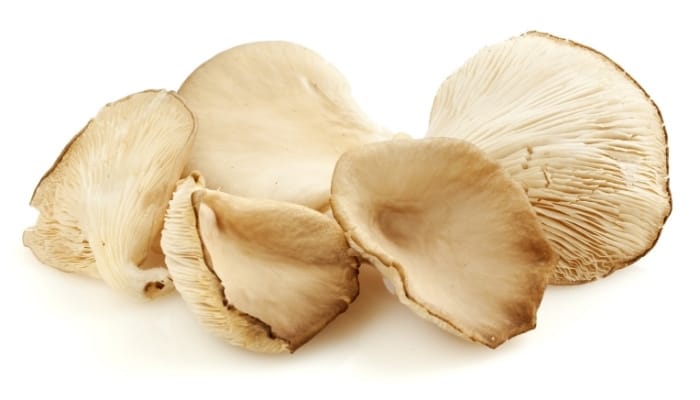
Eyewave | Dreamstime
Oyster mushrooms are probably the single most sought-after specialty mushroom on the market.
There are many strains of oyster mushrooms available. All oysters tend to shrink little and hold their texture well when cooked. Silky and springy, they have an incredible texture both raw and cooked.
Oyster mushrooms usually sell for $12 to $20 per pound.
Shiitake Mushrooms
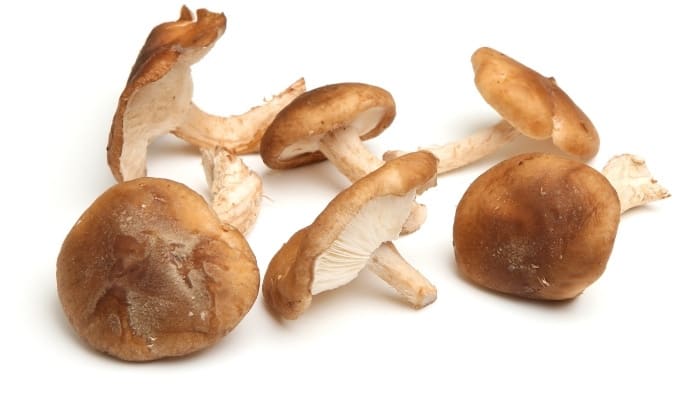
Joseph Gough | Dreamstime
Shiitake mushrooms are originally from East Asia but are now grown all over the world.
Cooked shiitake mushrooms are meaty in texture with a strong earthy and umami flavor. When cooked, the tops become tender quickly. The stems take more time to cook but are equally delicious when given enough time in the pan or oven.
Most growers sell their shiitake mushrooms for about $13 to $30 per pound.
Lion’s Mane Mushrooms
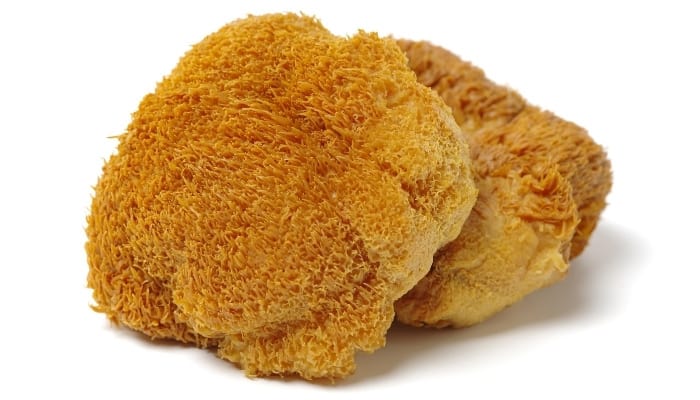
Jianghongyan | Dreamstime
Raw lion’s mane mushrooms are instantly recognizable due to their hair-like spines. These mushrooms are reputed for their culinary and medicinal uses.
Lion’s mane has quite a unique flavor, some say it’s lobster-like. When cooked these mushrooms feel meaty yet tender.
Most people grow and buy lion’s mane mushrooms for their health benefits. They are believed to help with cognitive abilities, prevent heart disease, reduce inflammation, and more.
You can find lion’s mane mushrooms selling for about $15 per pound.
Morel Mushrooms
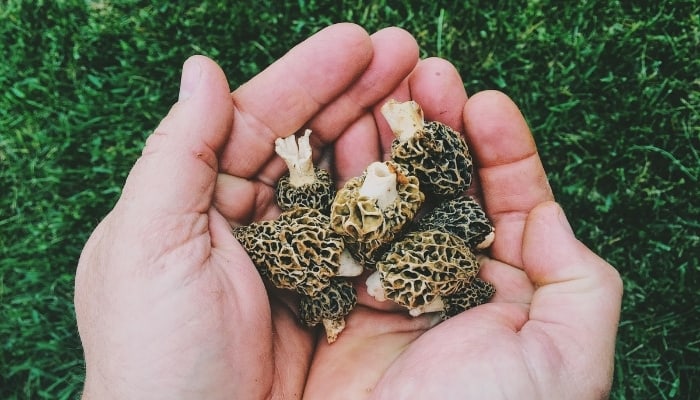
Sarah Morgan | Dreamstime
Morels are some of the most delectable and expensive mushrooms on the market.
These are easily identified by their honeycombed caps and a color that ranges from a pale yellow to an orange or brown.
Because morel cultivation is so difficult, most morels on the market come from foraging. Wild morel hunting and selling is a multimillion-dollar business.
Morels are best eaten fresh, although they always need to be cooked before eating to remove toxins. In areas where fresh morels aren’t readily available, many buyers turn to flash-frozen or dried morels.
Gourmet chefs will kill for these mushrooms. Because they are wild-foraged, rare, and can’t be easily farmed, morels are very expensive.
Dried morels usually sell for $200 to $240 per pound.
Pros & Cons of Growing Mushrooms For Money
Growing mushrooms can be a profitable and fulfilling business.
Before starting, potential growers need to see both sides of the equation—the advantages and the difficulties of growing mushrooms for profit.
Mushroom farming pros:
- Low overhead costs
- Little experience required
- Mushrooms can be sold fresh or preserved for future sales
- The specialty mushroom industry is growing
- Less labor-intensive than other types of farming
Mushroom farming cons:
- Time-consuming
- Controlling bacteria and disease can be difficult
- Fresh mushrooms spoil quickly
- Specialized equipment is required at larger scales (sterilizer, fruiting chamber)
You Should Start A Mushroom Farm If…
Mushroom farming isn’t for everyone. Successful growers tend to share similar characteristics that make them enjoy the process of growing mushrooms and help them to be successful at it.
You should start a mushroom farm if…
1.You love working with your hands.
Even though most mushroom cultivation happens indoors, you still need to be comfortable getting your hands dirty.
You will need to combine substrates with spawn, fill up grow bags, transport the bags from place to place, harvest, clean up, and do it all again!
This isn’t a desk job, so you better be prepared to be active all day.
2. You are entrepreneurially-minded.
Make no mistake, mushroom farming is serious business. To be successful at it, you need to understand basic business principles and be comfortable with risk.
You will be investing your hard-earned money into a mushroom growing business and there is a chance you may fail, losing your investment. If you aren’t comfortable with this, mushroom farming isn’t for you.
To be successful in this field, you need to have a great attitude and be able to persevere through difficulties. If you are the kind of person who doesn’t give up when faced with a problem, but instead looks for a solution, mushroom farming may be for you.
3. You enjoy dealing with people.
Working with people is an essential part of the job. You need to enjoy—or at least be good at—building relationships with customers.
Whether you are dealing with your neighbor, a local chef, or a large commercial buyer, it’s up to you to make a great impression and close the deal.
This ties into your marketing skills, which are indispensable for small-scale farmers. The better you can network, the more your business can grow.
Commonly Asked Questions
How many days mushroom grow?
If you are using mushroom growing kits, the process is incredibly fast and easy. Oyster mushrooms, grown from kits, are ready to eat in just around 10 days start to finish.
But if you are growing mushrooms from scratch, either by mixing your own substrate or buying ready-made ones, the process will take longer.
For oyster mushrooms, once you have added the spawn to the substrate (inoculation), the bags will need to sit in a controlled environment for about two weeks. During this time, the mycelium will colonize the substrate.
After two weeks, it’s time for fruiting. The fruiting process takes about one week more for the mycelium to bloom into a bouquet of mushrooms.
So, even if you do the entire process yourself, growing a popular variety like oyster mushrooms takes just around three weeks or 21 days.
Vertical Fruiting vs. Side Fruiting – What’s The Difference?
With vertical fruiting, the inoculated growing bag or block is cut on the top to allow the mushrooms to grow upwards.
With side fruiting, the only difference is the position of the opening in the container. A slit or circle is cut into the side so that the mushrooms bloom horizontally.
The difference comes down to how you shelve and organize your mushroom containers during fruiting.
Vertical fruiting containers are ideal when you want to fit as many containers as possible into a given space. By stacking the mushroom blocks on shelves packed side-by-side, you can be incredibly efficient with your space.
This is because the bouquet will grow upwards and won’t interfere with any of its neighbors.
Horizontal fruiting mushrooms can’t be packed as closely together without damaging the mushrooms. However, these horizontal setups make harvesting much easier as you will need to move and handle the bags less.
What is the most expensive mushroom?
The most expensive mushroom in the world is the European white truffle. Coming out of Italy, these pungent chunks of fungus grow by the roots of certain species of trees and only under perfect conditions.
White truffles are foraged for, not grown.
Because they are so difficult to find and so desirable in the culinary world, they can sell for upwards of $3,000 per pound!
What conditions are needed for a mushroom to grow?
For ideal mushroom growth, the right balance of temperature, moisture, light, and nutrients is essential.
Fungi do not photosynthesize and therefore don’t need light the way plants do. For mushrooms to spawn, near-darkness is preferable.
Mushrooms do, however, require some light to form fruiting bodies, which are precisely what mushroom farmers are after.
Mushrooms only need a few hours of light per day during and only during the fruiting stage.
The substrate on which you grow mushrooms, and even the air around them, must be moist. Mushrooms very easily dry out and need high humidity to stay healthy. The substrate should always be moist, but never wet, and ideally, the air in your fruiting chamber should have humidity control.
Another thing you need to control is the temperature. Mushrooms usually fare best when grown between 55° and 65° Fahrenheit.
Keeping the temperature right is especially important during fruiting. Serious farmers will usually have temperature control in their fruiting chamber, if not throughout every stage of the growing process.
Lastly, mushrooms need a balance of nutrients to survive and thrive. These nutrients include nitrogen, sugar, starch, protein, fats, and lignin. Nutrients are delivered to the mushrooms via the substrate.

